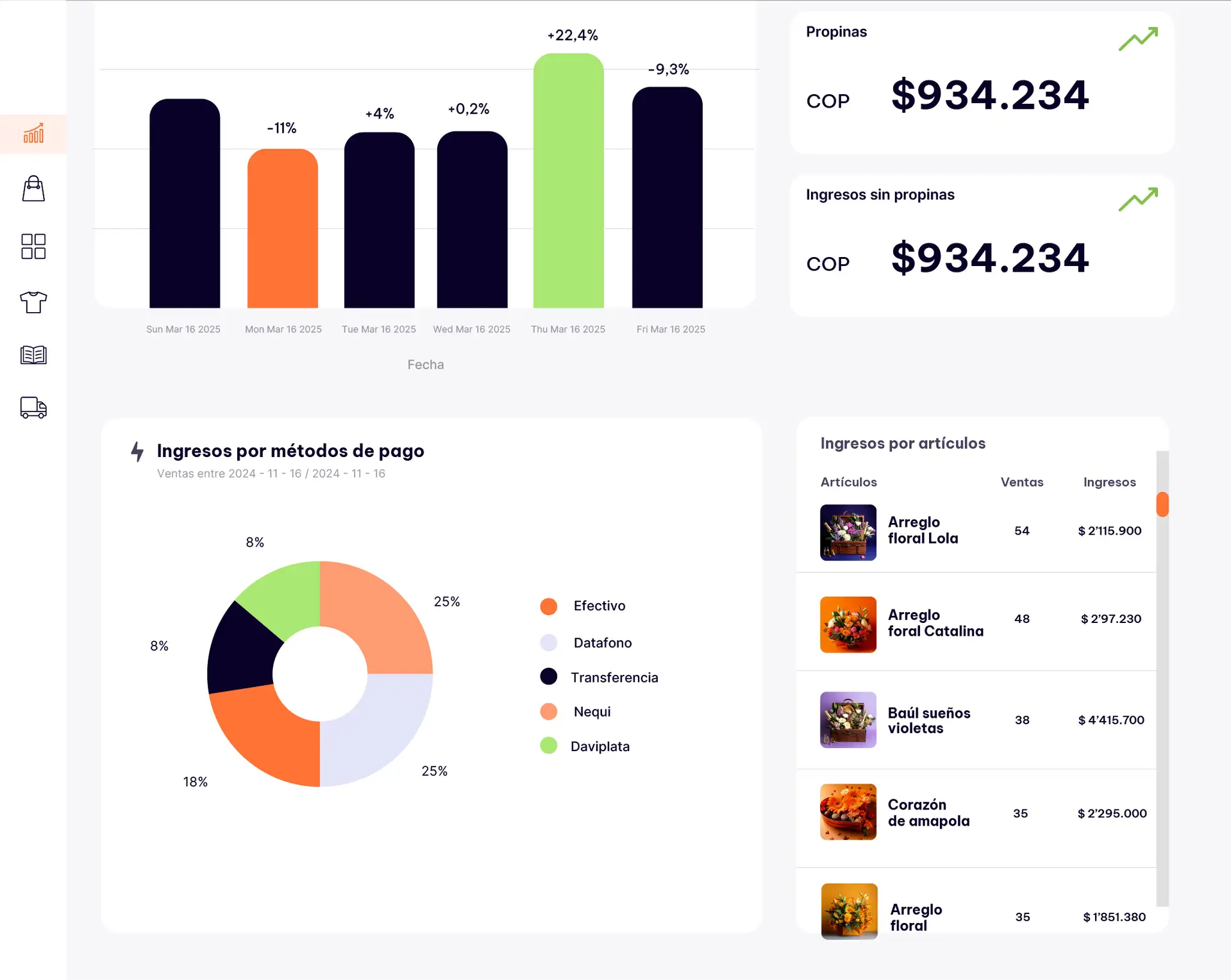Introduction: The Hidden Cost of Difficult Customer Encounters
Picture this: It’s been a long day at your store, you’ve helped dozens of customers with genuine care and enthusiasm, and then it happens. A customer walks in with an attitude that could freeze fire, complaining loudly about everything from your prices to your product selection, demanding refunds for items they clearly damaged themselves, and treating you like you’re personally responsible for every inconvenience they’ve ever experienced in retail.
Your heart starts racing, your palms get sweaty, and you feel that familiar knot forming in your stomach. By the time they leave, you’re emotionally drained, questioning whether you’re cut out for this business, and dreading the next customer who might walk through your door. Sound familiar?
If you’re nodding your head right now, you’re not alone. Research shows that 85% of retail workers experience stress-related symptoms directly linked to difficult customer interactions, and for small business owners, the impact is even more profound. Unlike employees who can pass challenging customers to managers, as a business owner, you’re the first and last line of defense.
But here’s the truth that no one talks about enough: difficult customers don’t have to burn you out. In fact, learning to handle challenging interactions can become one of your greatest strengths as a retailer. The key isn’t avoiding difficult customers altogether – that’s impossible – but developing the skills, mindset, and systems that protect your energy while still providing excellent service.
The emotional toll of customer conflicts goes far beyond the immediate interaction. It affects your sleep, your relationships, your decision-making abilities, and ultimately, your business performance. When you’re constantly on edge, anticipating the next difficult encounter, you can’t show up as your best self for the customers who deserve your energy and enthusiasm.
This article will equip you with practical, tested strategies that successful retailers use to maintain their composure, protect their mental health, and even turn difficult situations into opportunities for building stronger customer relationships. You’ll learn not just what to do in the moment, but how to build long-term resilience that keeps you energized and motivated, even when facing the most challenging customers.
1. Understanding the Psychology Behind Difficult Customer Behavior
Before you can effectively handle difficult customers, you need to understand what’s really driving their behavior. Most challenging customer interactions aren’t actually about you, your products, or even your store – they’re about something deeper happening in that person’s life.
When customers act aggressively, make unreasonable demands, or seem impossible to please, they’re often expressing frustration, fear, or disappointment that has nothing to do with your business. They might be dealing with personal stress, financial pressure, relationship problems, or simply having a terrible day. Your store becomes a safe place for them to release emotions they can’t express elsewhere.
Understanding this doesn’t mean you should accept abusive behavior, but it helps you respond from a place of professionalism rather than taking things personally. When you recognize that their anger isn’t really about you, you can maintain emotional distance while still providing service.
There are several common types of difficult customers, each requiring different approaches. The “Know-It-All” customer questions your expertise at every turn and insists on doing things their way. The “Never Satisfied” customer finds fault with everything and seems impossible to please. The “Aggressive Bargainer” treats every interaction like a battle to be won. The “Victim” customer believes everyone is out to get them and sees problems everywhere.
Each type responds to different strategies, but they all share one common need: they want to feel heard and respected. Often, difficult behavior escalates when customers feel ignored, dismissed, or misunderstood. By learning to identify these patterns early, you can address the underlying need before the situation becomes explosive.
Research in customer psychology shows that 68% of customers who seem “difficult” are actually expressing unmet expectations or previous negative experiences with other businesses. They’re not inherently problematic people – they’re people who have learned to be defensive in retail situations because they’ve been disappointed before.
Practical Exercise: For the next week, keep a simple log of difficult customer interactions. Note the type of behavior, what seemed to trigger it, and how the customer responded to different approaches. This will help you identify patterns and develop more targeted strategies for each situation type.
2. Developing Emotional Armor: Protecting Your Mental Energy
The most successful retailers develop what psychologists call “emotional armor” – the ability to maintain professional composure while protecting their personal well-being during challenging interactions. This isn’t about becoming cold or uncaring; it’s about creating healthy boundaries that allow you to serve customers effectively without absorbing their negative energy.
The first component of emotional armor is physical awareness. Your body responds to stress before your mind fully processes what’s happening. Learning to recognize early warning signs – tension in your shoulders, changes in your breathing, or that familiar knot in your stomach – gives you the opportunity to implement coping strategies before you become overwhelmed.
Breathing techniques are your first line of defense. When you feel stress building, focus on slow, deep breaths that engage your diaphragm. This activates your parasympathetic nervous system, which naturally calms your stress response. The “4-7-8” technique works particularly well in retail situations: breathe in for 4 counts, hold for 7, and exhale for 8. You can do this discretely while listening to a customer’s complaint.
Mental reframing is another powerful tool. Instead of thinking “This customer is attacking me,” try “This customer is having a difficult experience and needs help problem-solving.” This shift in perspective changes your emotional response and opens up more solution-focused approaches to the interaction.
Creating physical anchors can also help maintain emotional stability. This might be touching a piece of jewelry that reminds you of your purpose, keeping your feet firmly planted on the ground, or maintaining confident posture. These physical cues send signals to your brain that you’re safe and in control.
The concept of emotional boundaries is crucial for long-term sustainability. You can be empathetic and helpful without taking on your customers’ emotions as your own. Imagine an invisible barrier that allows care and professionalism to flow through while blocking negative energy from affecting your core emotional state.
Practical Exercise: Practice the “emotional reset” technique between difficult customers. Take 30 seconds to shake out your hands, roll your shoulders, take three deep breaths, and remind yourself of one thing you’re grateful for in your business. This simple routine helps prevent emotional buildup throughout the day.
3. De-escalation Techniques That Actually Work
De-escalation is an art that combines specific communication techniques with genuine emotional intelligence. The goal isn’t to “win” the interaction or prove you’re right – it’s to reduce tension while finding a solution that works for both parties.
The most powerful de-escalation tool is active listening. This goes beyond simply hearing words; it involves understanding the emotion and need behind the complaint. Use phrases like “Help me understand…” or “It sounds like you’re frustrated because…” to show you’re genuinely trying to grasp their perspective. When customers feel heard, their defensive walls often come down naturally.
Voice modulation plays a crucial role in de-escalation. Speak slowly and at a lower volume than you normally would. This forces the customer to match your energy level to hear you clearly. Avoid matching their emotional intensity – if they’re speaking loudly and quickly, you should speak quietly and slowly. This creates a calming contrast that naturally reduces tension.
The “Feel, Felt, Found” technique is particularly effective for addressing objections and complaints. “I understand how you feel about this situation. Other customers have felt similarly when facing this issue. Here’s what we’ve found works best…” This approach validates their emotion while positioning you as someone who has successfully helped others in similar situations.
Strategic agreement can defuse hostility without admitting fault. You can agree with their feelings (“You’re absolutely right to be frustrated”) or their desire for good service (“You deserve to have a positive experience”) without accepting blame for the situation. This creates common ground while maintaining your professional position.
Know when to involve others or escalate internally. Sometimes the best de-escalation strategy is recognizing when you need support. This might mean calling a colleague over to provide a fresh perspective, taking a brief break to collect yourself, or in extreme cases, knowing when to end the interaction for everyone’s safety.
Setting clear boundaries is part of effective de-escalation. You can be helpful and accommodating while still maintaining standards for respectful behavior. “I want to help you resolve this issue, and I need you to lower your voice so we can work together effectively” is a boundary-setting statement that keeps the focus on solutions.
Practical Exercise: Role-play common difficult customer scenarios with a friend or family member. Practice using different de-escalation techniques and pay attention to which approaches feel most natural for your communication style. The more you practice in low-stakes situations, the more naturally these techniques will come during real interactions.
4. Setting Boundaries Without Losing Business
One of the biggest fears retail entrepreneurs have about handling difficult customers is that setting boundaries will drive away business. However, research consistently shows that businesses with clear, respectfully enforced boundaries actually attract more loyal customers and create healthier environments for everyone.
The key to successful boundary-setting is framing it as protection for all customers, not punishment for difficult ones. When you maintain standards for respectful behavior, you create an environment where your best customers feel comfortable and want to return. Most customers appreciate businesses that refuse to tolerate abusive behavior.
Start by clearly defining what behavior you will and won’t accept. This includes obvious things like verbal abuse, threats, or discrimination, but also subtler issues like customers who monopolize your time when others are waiting, those who consistently try to circumvent your policies, or people who create uncomfortable environments for other shoppers.
Communication is crucial when setting boundaries. Use “I” statements that focus on your needs rather than attacking their behavior. “I need to help other customers who are waiting” is more effective than “You’re taking too much of my time.” This approach maintains respect while clearly stating your position.
The “broken record” technique helps maintain boundaries when customers push back. Simply repeat your boundary statement calmly and consistently without getting drawn into arguments or lengthy explanations. “Our return policy requires receipts for all returns” becomes your calm, consistent response no matter how they try to argue around it.
Document boundary violations for repeat customers. Keep simple notes about customers who consistently create problems. This helps you prepare for future interactions and provides evidence if you need to ban someone from your store. Most difficult customers only push boundaries when they think you won’t remember or take action.
Train yourself to stay calm when enforcing boundaries. Customers may test your resolve by escalating their behavior when you first set limits. This testing phase is normal – they’re checking to see if you’ll maintain your standards under pressure. Staying calm and consistent during this phase usually results in either improved behavior or the customer choosing to shop elsewhere.
Have a support system in place for enforcing serious boundaries. This might mean having a colleague you can call for backup, knowing when to contact local authorities for threatening behavior, or having a clear process for banning customers who cross serious lines. Never feel like you have to handle extreme situations alone.
Practical Exercise: Write down your business’s behavioral boundaries and practice stating them clearly and respectfully. Create simple scripts for common boundary-setting situations, such as enforcing return policies or addressing disruptive behavior. Having prepared responses helps you stay calm and professional when tensions are running high.
5. Turning Challenges into Opportunities for Growth
The most successful retailers learn to view difficult customer interactions not as obstacles to endure, but as opportunities to strengthen their business skills, improve their systems, and build resilience. This mindset shift transforms one of retail’s biggest challenges into a competitive advantage.
Every difficult customer interaction provides valuable feedback about your business. They might be highlighting genuine problems with your policies, procedures, or communication that other customers experience but don’t mention. When someone complains aggressively about your return policy, it might be worth examining whether the policy is clear, fair, and well-communicated.
Use challenging interactions as training opportunities. Each difficult situation you handle successfully builds your confidence and expands your toolkit for future encounters. Keep a “wins” journal where you record successful de-escalations, noting what techniques worked and how you felt afterward. This positive reinforcement helps build the mental resilience needed for long-term success.
Difficult customers often become your most loyal ones when you handle their concerns effectively. People who complain are actually more likely to continue doing business with you than those who silently leave when dissatisfied. When you turn a negative experience into a positive one, you create a powerful emotional bond that leads to increased loyalty and word-of-mouth referrals.
Consider creating systems that prevent common complaints before they escalate. If you consistently hear the same concerns, develop proactive solutions. This might mean improving your return policy communication, training staff differently, or adjusting your product presentation. Each improvement makes future interactions smoother for everyone.
Build a reputation as someone who handles problems well. When word spreads that you’re fair, professional, and solution-focused even in difficult situations, it attracts customers who value good service and deters those who are looking for businesses they can take advantage of.
Use difficult interactions to practice leadership skills you’ll need as your business grows. If you plan to hire employees someday, your ability to handle challenging customers with grace will be crucial for training and supporting your team. The skills you develop now become the foundation for building a stronger organization later.
Track your progress in handling difficult situations. Notice how your stress levels, recovery time, and confidence change as you implement these strategies. Most retailers find that what once felt overwhelming becomes manageable, and eventually even becomes a source of professional pride.
Practical Exercise: After each challenging customer interaction, take five minutes to write down what went well, what you learned, and how you could improve next time. Focus on your growth rather than the customer’s behavior. This reflection process accelerates your skill development and builds confidence for future encounters.
Final Reflection: Your Journey from Surviving to Thriving
As we reach the end of this guide, take a moment to reflect on how far you’ve already come in your retail journey. Every difficult customer you’ve faced, every moment of doubt you’ve overcome, and every boundary you’ve learned to set has been building your strength as a business owner. The skills we’ve discussed aren’t just about handling difficult customers – they’re about becoming the kind of retailer who can weather any storm while maintaining their passion for serving others.
The truth is, learning to handle difficult customers without burning out is one of the most valuable skills you can develop as a retail entrepreneur. It’s not just about protecting your mental health, though that’s crucial. It’s about building the confidence, resilience, and leadership abilities that will serve you throughout your entire business journey.
Remember that every master retailer started exactly where you are now. They felt overwhelmed by difficult customers, questioned whether they were cut out for business ownership, and wondered if it would ever get easier. What separated those who succeeded from those who gave up wasn’t an absence of challenges – it was the decision to view those challenges as opportunities for growth.
The strategies in this guide work, but only if you implement them consistently. Start small. Choose one technique that resonates with you and practice it for a week. Notice how it affects your stress levels and customer interactions. Then add another strategy. Building these skills is like strengthening a muscle – it takes time and consistent practice, but the results compound over time.
Don’t aim for perfection. There will still be days when a customer catches you off guard, when you react emotionally instead of professionally, or when you feel drained despite your best efforts. That’s not failure – that’s being human. The goal isn’t to never feel stressed by difficult customers; it’s to recover more quickly and learn from each experience.
Your journey as a retail entrepreneur is unique, and so is your approach to handling challenges. Some of these strategies will feel natural to you immediately, while others might take more practice. Trust yourself to adapt these techniques to fit your personality, your business, and your customers. The best customer service approach is one that feels authentic to who you are while still maintaining professional standards.
As you continue to grow your business, remember that handling difficult customers well is actually a competitive advantage. In a world where many businesses provide poor customer service, your ability to remain calm, professional, and solution-focused sets you apart. Customers notice the difference, and they reward businesses that treat them well even during challenging moments.
The skills you’re developing now will serve you far beyond customer interactions. The emotional regulation techniques help in all areas of business and life. The communication skills improve your relationships with suppliers, employees, and family members. The boundary-setting abilities protect your time and energy in every situation. You’re not just learning to handle difficult customers – you’re becoming a stronger, more confident leader.
Finally, remember why you started this business in the first place. Whether it was to provide for your family, serve your community, or build something meaningful, that purpose is worth protecting. Don’t let difficult customers steal your joy or make you forget why you love what you do. With the right strategies and mindset, you can maintain your passion while building a successful, sustainable business that serves both you and your customers well.
You have everything you need to succeed. Trust the process, be patient with yourself, and remember that every challenge you overcome makes you stronger and better prepared for whatever comes next.





